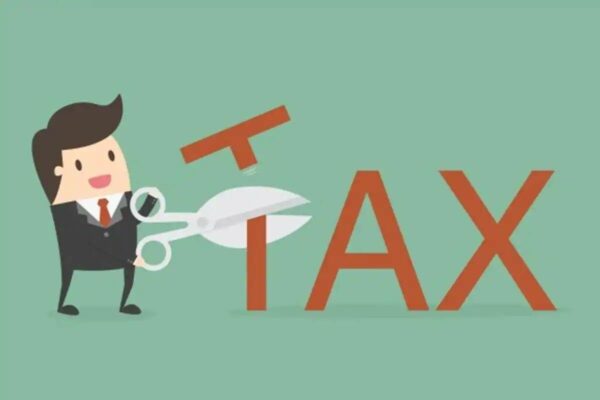TDS on Payroll Check NEW Tax Rate for 2021 Here

TDS is a withholding tax for receiving any income, whether it’s wages, commissions or any contractual payments under the system. tax rate system. The most common TDS deduction is Tds On Salary. This deduction will always be made on the part of the employer when paying the employee’s salary and payroll.
TDS-to-salary ratios range from 10 to 30%. Employer for TDS deduction must have a valid TAN number issued by the government of India. This is a 10 alphanumeric number that is required under the TDS Withholding Summary under Section 192 of the Income Tax Act of India.
How to calculate TDS on salary
Check Gross Monthly Income: This is the total of basic income + allowances and indirect benefits
Exemption under Article 10 of Income Tax Act. This is mainly HRA (Rental Allowance), medical expenses and travel allowance. Deduct all of these exemptions from gross pay.
ATD is calculated on annual earnings by multiplying by the corresponding number after deducting gross pay deductions. This figure is based on annual taxable income.

If you have any other source of income such as rental income, or any type of loss incurred as a result of paying interest on the mortgage. The same must be added or subtracted when calculating TDS.
Next, calculate the investments made during a year under Chapter VIA of the ITA (Income Tax Act). The same will be deducted from the online gross salary. Tax exemption under section 80C is allowed up to 1.5 lakh. The main investment avenues that can be included in calculating Tds On salary are SSC, NSC, Sukanya Samridhi etc.
Seniors’ tax exemptions are different from those under 60.
Factors to consider when deducting TDS from wages
TDS deduction will occur after subtracting exempt income from the employee’s total earnings. India’s ITA sets a limit for waivers. When employers deduct TDS from employees, they must provide requested details such as proof of income and employee statements.
The list of allowances eligible for tax exemption is as follows:
- Rent allowance
To avoid payroll TDS, an employee can apply for a rent subsidy and provide the required details. like a rent receipt.
- Standard deduction
To minimize the deduction of TDS from wages, one can also claim transportation and medical benefits. The standard deduction offered by the government is Rs 50,000.
- Child education allowance
The government provides an education allowance of Rs 100 per month for up to two children.
- Travel Leave Allowance (LTA)
This is a type of allowance that employers provide to employees. It is awarded when an employee moves out of town for professional reasons. An employee may apply for an LTA under Section 10(5) of the Income Tax Act 1961. It should be understood that a travel allowance can only be claimed if the LTA component is part of the leave pay. An employee can claim tax exemption in the LTA for up to a maximum of 4 years of travel.
Example
Ramesh earns a salary of Rs 70,000 per month. His annual income is Rs 8 40,000 per year. Depending on the salary, he can claim tax exemption up to Rs 100,000. After deduction, his taxable income is Rs 8,40,000. The annual tax will be Rs. 78,000+ Cess Tax 3% which is Rs 2,340.
The average TDS to salary ratio of Rs 8,40,000 is 9.56%

Who is required to deduct TDS from salary?
Employees may deduct Tds from pay when making monthly payments to employees. That’s part of why employees take paid leave. If someone earns salary up to Rs 250,000 per year, no deduction will be made.
Under article 192 of LIR, the following persons are responsible for withholding TDS at source:
Individuals
Companies (public or private)
HUF (indivisible Hindu family)
Partnership
Private company
Trusts
Partnerships
All of the above mentioned companies must make TDS deduction at specific time and submit it to the public treasury according to the regulations of the government. government of India. Under section 192 of the ITA, an employer must present evidence of an employee-employer relationship. Therefore, all employees withholding TDS such as HUFs, corporations or corporations, are not required to withhold TDS under Article 192 of the ITA.
Tax Tile for TDS deduction
Age Details of Residency in India
before age 60 Rs 2.5 Lakhs
Person aged 60 to under 80 Rs 3 Lakhs
Super Citizen over 80 years old Rs 5 Lakhs
Tax rate under new tax regime
Up to Rs 2.5. total income greater than Rs. 5 lakh + 4�ss
Rs 750,001 to Rs 10 Lakh
15% of total income greater than Rs.7. 5 lakh + 4’ss
Rs 10.00,001 to 12,50,000 Rs
20% of total income over Rs 10 lakh + 4’ss
Rs 12,50,001 to 15 Rs
25% of total income over Rs 12.5.
Main items under which deductions take place TDS:

- Section 80C
Here one can claim tax exemption up to Rs 150,000 per year. Here is a list of plans that are exempt:
Invest in mutual funds like linked savings plans, ULIPs, and more. It is also known as Fixed Tax Savings Deposit.
EPF
Children’s tuition
National Savings Certificate
Home loan principal repayment
Sukanya Samriddhi plan
Deferred annuity payments
Premium savings plan
Annual plan for home loan ‘life insurance
UTI retirement plan
Mutual fund investment
National Housing Bank real estate loan program
Stock and bond investment
- Section 80CCG
An employee can apply for an Annual Exemption up to Rs 25,000 under Article 80CG of the ITA. The minimum investment period should not be less than three years.
- Section 80D
Under Section 80D, people are allowed to exempt all annual payments in the form of health insurance premiums.
What is the deadline for making TDS payroll deductions?
All TDS deductions from wages must be made under Section 192 of the Income Tax Act and must be made no later than April 30.
Final Result
The income earned by the employee belongs to “Wage income”. But make sure the employer has a valid TAN and gives you Form 16, and all deductions are reflected on Form 26AS.
edited and proofread by nikita sharma




